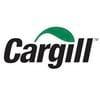Impact of PRRS RFLP 1-7-4 in previously positive and vaccinated versus naive sow herds
Published: July 24, 2025
Source : W. Burton 1,*, J. Pittman 1 / 1 Smithfield Hog Production Division - North Region, Waverly, VA, United States.
Summary
Keywords: Prior Immunity, PRRS RFLP 1-7-4, Sow Performance
Introduction:
A porcine reproductive and respiratory syndrome (PRRS) restriction fragment length polymorphism pattern of 1-7-4 emerged in North Carolina in 2014. The purpose of this study was to evaluate the impact of PRRS 1-7-4 in previously positive sow herds versus naïve sow herds using sow performance data.
Materials and Methods:
Sixteen sow farms diagnosed with PRRS 1-7-4 over a 10-week period during spring 2015 were selected. Prior to PRRS 1-7-4 break, 6 farms were Status II-A (Positive) and were routinely vaccinating with a commercial modified-live vaccine (MLV). Ten farms were Status IV (Negative) prior to the break. The post-break intervention strategy included MLV vaccination and was the same for all farms. Sow production data was collected from 13 weeks pre-break to 24 weeks post-break for each farm.
The data was compared between the Positive and Negative groups during the active PRRS break period which was either 10 or 20 weeks depending on behavior. The 10 week active period parameters were abortions, sow mortality, stillborns per litter farrowed and pre-wean mortality. The 20 week active period parameters were pigs born alive per litter farrowed, mummies per litter farrowed, pigs weaned per litter farrowed and total pigs sold. Time to baseline production (TTBP) and time to stability (TTS) were also measured.
The data was analyzed using ANCOVA where baseline production (average of 13 weeks prior to break) was used as a covariate to evaluate the differences in groups for each parameter. For both groups, the parameter data was reported as least square means for the active period defined for each parameter. The level of significance was set at 10% for all tests.
Results:
A significant increase in abortions was observed in the Positive group (+5%, p=0.05), however, there were significantly fewer losses observed in pigs born alive per litter farrowed (+1.41, p=0.01), pigs weaned per litter farrowed (+2, p< 0.01) and total pigs sold (+185.60, p=0.02). The Negative group had a significant increase in stillborns per litter farrowed (+0.61, p=0.01), mummies per litter farrowed (+1.17, p=0.04) and pre-wean mortality (+15%, p=0.03). There was no significant difference in sow mortality between the two groups. Average TTBP was 15.4 and 22.9 weeks for Positive (n=5) and Negative (n=10) groups, respectively. Average TTS was 25 and 24.5 weeks for the Positive (n=4) and Negative (n=6) groups, respectively.
Conclusion:
The sow performance data of the Positive group was significantly better than those in the Negative group for all production parameters except abortions and sow mortality under the conditions of this study. TTBP was shorter in the Positive group and TTS was similar between groups at 24 weeks post-break.
Disclosure of Interest: None Declared.
Published in the proceedings of the International Pig Veterinary Society Congress – IPVS2016. For information on the event, past and future editions, check out https://www.theipvs.com/future-congresses/.
Content from the event:
Related topics:
Recommend
Comment
Share

Would you like to discuss another topic? Create a new post to engage with experts in the community.









